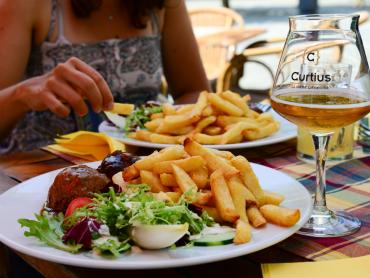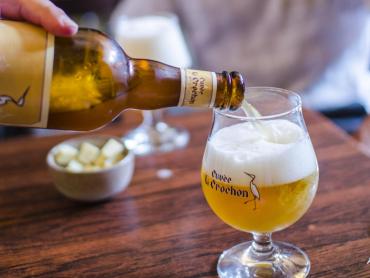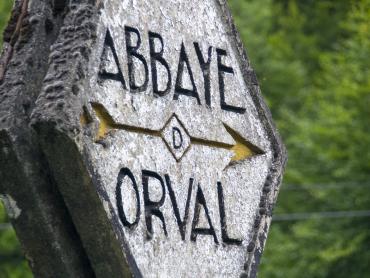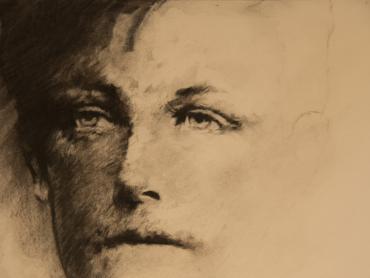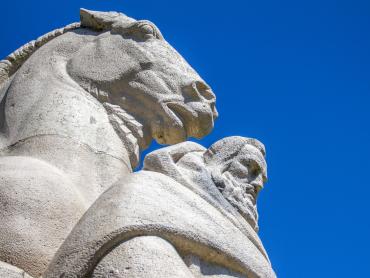Paliseul (Le pays des rivières )
Située au cœur de l’Ardenne, la région de la Haute-Lesse est dominée par de grandes forêts et sillonnée de limpides rivières. Le jeune Paul Verlaine y passa sans doute les plus belles années de sa vie.
À Jehonville
A - The village of Verlaine's aunt Voir sur la carte
As a boy, Verlaine loved to come on holiday ‘to his father’s country’. The latter’s sister, Julie, regularly welcomed her nephew for holidays. For Verlaine, this Ardennes hamlet was a place both of rest and of exile. Its isolation is strangely similar to that of the village in which Rimbaud was born, Roche, in the southern Ardennes.
Did you know?
The region bore little resemblance to what can be seen today. In the 19th century, a landscape of heaths stretched as far as the eye could see. These cleared lands were home to sheep: what a contrast with the grasslands where cows now graze! In the hamlet, some of the farms still have their small porch through which the sheep once entered.
À Paliseul
B - The house of Verlaine’s aunt Julie Evrard) Voir sur la carte
When he was on holiday, the poet liked to walk through the surrounding woods, along these rural roads, towards Beth or Jehonville. Nostalgia for these happy years in the Ardennes pursued him throughout his life. The low ceiling, the mists, the yellow or white forests, the waters of the streams, now black, now emerald green, were ever to be his paradise lost.
Au pays de mon père on voit des bois sans nombre.
Là des loups font parfois luire leurs yeux dans l’ombre
Et la myrtille est noire au pied du chêne vert.
In the land of my father, one sees countless woods,
Where wolves’ eyes sometimes gleam in the shade
And the blueberry is black at the foot of the green oak.
Did you know?
A plaque commemorating the presence of Verlaine in Paliseul, produced by writers from the Ardennes, has been placed on the façade of Louise Grandjean’s house. Opposite, the three tearaways, Paul Verlaine, Hector Peraut and the future priest Dewez came and played in the close that belonged to aunt Henriette, sister of the poet’s father. These days, the little garden has disappeared: the Paliseul tourist office now stands there.
Paul Verlaine and the Ardennes
In his book ‘Paul Verlaine et l’Ardenne’, Danielle Chanteux-Van Gottom highlights this region celebrated by the poet. Which of his verses were inspired by the Ardennes, which were written here, what trace did the places leave on the work and what remains of the poet in the land of his ancestors?
‘Paul Verlaine et l’Ardenne’, published by Weyrich.
À Paliseul
C - Carlsbourg Castle Voir sur la carte
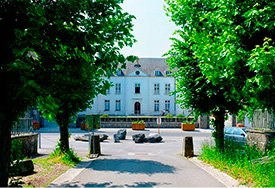
The colonel’s castle! After the French Revolution, this former property of the Latour d'Auvergne, dukes of Bouillon in the 18th century, passed into the hands of Colonel Grandjean, the late uncle of Verlaine who, with the Great Army, went on the Russian Campaign and was awarded the Legion of Honour. Although Verlaine never lived here, his poems evoke this lost wealth.
À Paliseul
D - Walking Voir sur la carte
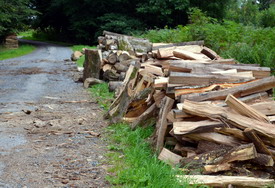
The Verlaine walk in Solmon Wood
Follow in the footsteps of the poet along these paths that he trod for so long. The walk starts from Saint-Roch chapel and heads toward the forest of shade praised by Verlaine in his verses, the Solmon wood. “Where the blueberry is black at the foot of the green oak”.
Practical details
Distance: 5.8 km
Waymarking: blue and white rectangles
Difficulty: easy
Time: 3 h
Start: Saint-Roch chapel
Walking Voir sur la carte
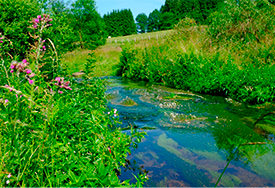
Bergimont valley
Verlaine loved to come and recharge his batteries and draw inspiration from Bargimont valley, where the paddle wheels of long-gone mills once turned. The site has retained all its splendour.
The valley lies between Obridge and Paliseul. You can enter it just after the container park, on the left, coming from Paliseul. The Paliseul red mountain biking route (15 km) crosses the pretty stream at the bridge, just where Verlaine like to stop, lost in contemplation.
À Paliseul
E - Verlaine’s wolves Voir sur la carte
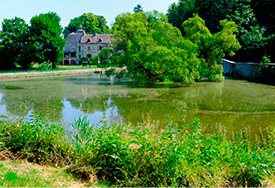
The wolves spent their twilight years in the Ardennes of Verlaine. His father is said to have killed one of the last of them. They figure in his poems, doubtless the inheritance of stories told during evening gatherings... In Beth, father and son hunted in the surrounding woods. After the hunt, they went to Abbyes castle, the meeting place of notables and hunters. “My father was a good shot. The region abounded in game and frequent hunting parties were organised, or even groups to track wolves, numerous at the time. Already quite big, I used to carry my father’s game bag and, as an unofficial guest, attend dinner with the gentlemen…”
For the wolf, an outstanding trapper, it was just a step to return to the Ardennes, the territory that was his, as it was Verlaine’s…
Parmi l’obscur champ de bataille,
Rôdant sans bruit sous le ciel noir,
Les loups obliques font ripaille
Et c’est plaisir que de les voir
Agiles, les yeux verts, aux pattes
Souples sur les cadavres mous
-Gueules vastes et têtes plates-
Joyeux, hérisser leur poils roux
‘Les loups’ (Jadis et Naguère)
Walking Voir sur la carte
A superb walk crosses the former vast hunting grounds of the predator, the Ban d’Our woods.
Practical details
Distance: 10.5 km
Waymarking: yellow and white rectangles
Difficulty: average
Time: 2.30hrs
Start: from the lakes in Beth (wooden panels)
To go further afield
Paliseul walking map, available from the tourist office.
À Paliseul
F - Tourist reception site Voir sur la carte
Syndicat d'Initiative de Paliseul
Grand-place, 7 - 6850 Paliseul
+32 (0)61/28.77.37
info@si-paliseul.be
Open :
during school holidays from Monday to Saturday from 10am to midday and from 2pm to 4pm
the rest of the year : open on Friday from 4pm to 6 pm and Saturday from 9am to 1pm



